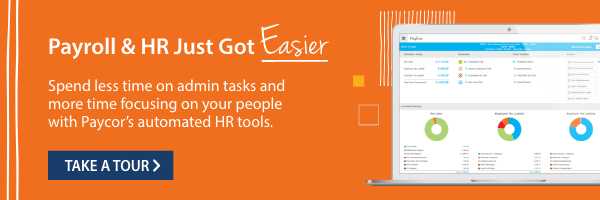As a leader, it pays to investigate all of the benefits available to make your employees’ lives easier. Adding deferred compensation plans for employee stock options, pension, and retirement plans, to your company’s benefits package could make good business sense. These programs help employees save for retirement or significant events (e.g., new home, college tuition, health or other personal crises, death) by reducing taxable income and realizing capital gains.
What is a Deferred Compensation Plan?
A deferred compensation plan allows a portion of an employee’s compensation to be paid at a later date, usually to reduce income taxes. Many people use this money as a form of retirement income. Taxes on deferred income are deferred until it is paid out – typically after they reach retirement age. As a result, these plans can be attractive to high earners. There are two types of deferred compensation plans: non-qualified and qualified plans. It’s important to know the details, including the pros and cons of eligible plans.
How Do Companies Fund Deferred Compensation Plans?
Companies can pay for agreed-upon benefits of a non-qualified deferred compensation plan from cash flow. However, a more secure funding method would be to purchase company-owned cash value life (COLI) or short-term disability (COSDI) insurance for each participant. The company remains the owner, premium payer, and beneficiary for each policy. Salary deferrals (contributions) and/or company contributions pay the insurance premiums. Policy cash values grow income tax-deferred and can be accessed via loans or withdrawals to pay plan benefits at the employee’s retirement.
The benefits of funding a deferred compensation program with COLI/COSDI also allow the employer to recover the plan’s cost, in whole or in part, through receipt of death proceeds. Contractually guaranteed cash values also help ensure funds will be available when needed. Long-term financing and group rates also help ease the financial burden on small businesses.
Types of Deferred Compensation Plans
Deferred compensation plans generally fall into two categories: qualified and nonqualified. Both allow employees to delay receiving a portion of their income until a later date, but they differ in eligibility requirements, IRS oversight, and flexibility.
Qualified Deferred Compensation Plans
Qualified plans must comply with Employee Retirement Income Security Act (ERISA) regulations and are typically available to all employees, not just executives. These plans are designed to encourage long-term savings while providing certain protections and tax advantages.
Key characteristics:
- Must meet ERISA standards, including nondiscrimination rules and participation requirements.
- Contributions are subject to annual IRS limits.
- Funds are held in a trust account, making them more secure.
- Withdrawals made before age 59½ are generally subject to a 10% early withdrawal penalty.
Employees defer taxes on contributions and earnings until distribution, often in retirement.
Common examples:
- 401(k) plans: Offered by private employers.
- 403(b) plans: Available to employees of public schools and certain nonprofits.
- 457 plans: Typically offered to government and some tax-exempt organization employees.
Qualified plans provide strong tax advantages and security but come with stricter rules and contribution limits compared to nonqualified plans.
Nonqualified Deferred Compensation Plans (NQDCs)
Nonqualified plans, such as supplemental executive retirement plans (SERPs), bonus deferral agreements, and excess benefit plans, are typically used to attract and retain top talent, especially executives or high earners who have already maxed out contributions to qualified plans.
Key characteristics:
- Governed by IRS Section 409A but not subject to ERISA participation requirements.
- Funded informally through a written agreement between the employer and employee.
- Offer no annual contribution limits, providing flexibility for higher earners.
- Deferred income is taxed at distribution, often after retirement when the employee may be in a lower tax bracket.
Generally speaking, these are less secure than qualified plans because the funds remain part of the company’s assets and are subject to creditor claims if the employer faces financial hardship.
Benefits of Deferred Compensation
Deferred compensation plans can be powerful tools for both employees and employers. By allowing income to be paid at a later date, (often after retirement), these plans offer significant tax advantages, help attract and retain top talent, and provide flexibility in long-term financial planning.
Tax Advantages
One of the main benefits of deferred compensation is the ability to reduce current taxable income. Employees defer part of their salary or bonuses to a future year, often when they’ll be in a lower tax bracket. Earnings on those funds also grow tax-deferred until distribution, allowing investments to compound without immediate taxation.
For employers, offering a deferred compensation plan can provide payroll tax benefits and help align employee financial goals with the organization’s long-term success.
Retention and Recruitment Benefits
Deferred compensation is frequently used as a retention strategy and incentive for executives and high-performing employees. Because funds are paid out over time, often tied to tenure, performance milestones, or retirement, it encourages key employees to stay with the company longer.
It can also be a competitive differentiator in recruitment, especially for senior roles where candidates are evaluating total compensation packages beyond salary alone.
Flexibility and Customization
Unlike traditional retirement plans, nonqualified deferred compensation plans offer greater flexibility. Employers can tailor contribution amounts, vesting schedules, and payout terms to individual employee agreements. Participants can also choose when and how to receive distributions, such as a lump sum or annual installments, based on financial goals or retirement timelines.
Downsides and Risks of Deferred Compensation
While deferred compensation plans also come with significant financial and legal risks that both employees and employers should understand. Because these plans are tied to company performance and future payouts, careful planning and risk assessment are essential.
Company Solvency and Creditor Risk
The biggest downside of a deferred compensation plan is the risk of company insolvency. If an employer goes bankrupt, deferred funds are considered part of the company’s assets, not the employee’s. This means the money can be used to pay off company debts, leaving participants with little to no recourse. Even employees who leave a company before bankruptcy can face losses if they were aware of the organization’s financial instability at the time of departure. Unlike qualified plans such as 401(k)s, nonqualified deferred compensation plans do not offer creditor protection
Forfeiture and Early Withdrawal Penalties
Deferred compensation funds are typically not accessible before retirement or the designated payout date. Employees who leave the company early, fail to meet vesting requirements, or violate the terms of their agreement could forfeit some or all of their deferred earnings.
In addition, taking a lump-sum distribution can trigger a large tax bill and early withdrawal penalties, depending on timing and plan structure. These restrictions make liquidity planning an important part of participation.
Liquidity and Investment Risk
Because deferred compensation represents future income, participants cannot easily access or move the funds if they need cash flow. The plan’s value may also fluctuate with company performance or investment returns, potentially reducing expected payouts.
For employees who rely heavily on their company’s success, this can create concentration risk, where both their career and retirement savings depend on the same employer’s stability.
Plan Variation and Complexity
Deferred compensation plans are not standardized, and terms can vary widely between employers. Contribution limits, payout schedules, and vesting rules are often customized, making it crucial for participants to review plan details carefully. HR leaders should encourage employees to consult a financial or legal advisor before entering into any deferred compensation agreement.
Proper planning can help minimize risk exposure and ensure the plan supports long-term financial goals rather than creating unexpected liabilities.
Who Should Consider a Deferred Compensation Plan?
Deferred compensation plans aren’t the right fit for every employee, but for certain groups, they can be a powerful wealth-building and retention tool. These plans are most beneficial for executives, high-income earners, and long-tenured employees who are looking to defer taxable income and plan strategically for retirement.
Executives and High-Income Earners
Deferred compensation plans are commonly offered to executives and top performers who have already maxed out contributions to qualified retirement plans like 401(k)s. Because nonqualified deferred compensation plans don’t have annual IRS contribution limits, they allow high earners to defer more income than traditional plans, helping lower their current taxable income while building wealth over time.
Employees who receive large annual bonuses or stock-based incentives may also find these plans advantageous, as they provide a structured way to manage tax exposure and long-term savings.
Long-Term or Key Employees
You can also use deferred compensation to keep top talent. Linking deferred payouts to tenure or performance milestones encourages employees to remain with the organization longer. This makes these plans ideal for key employees with long-term career trajectories or specialized skill sets that are difficult to replace.
Eligibility and Enrollment Considerations for Deferred Compensation
Once a deferred compensation plan is offered, eligible employees typically have 30 days to enroll. The plan will specify how much income can be deferred and when it will be paid out, often at retirement or another predetermined date. After enrollment, a percentage of the employee’s salary or bonuses is withheld and invested according to the plan’s structure.
Participants can generally update their elections annually, allowing for flexibility as their financial situations or goals evolve.
Weighing the Pros and Cons of Deferred Compensation Plans
While deferred compensation plans can offer meaningful tax and savings advantages, they also carry financial risk. Here’s a quick overview of potential pros and cons:
| Pros | Cons |
| Tax deferral lowers employees’ annual tax burden | Risk of forfeiture if the company becomes insolvent |
| Helps attract and retain top talent | Primarily benefits high earners, offering limited advantages to others |
| Flexible plan design and payout options | High administrative burden for employers |
| Potential for deferred income to grow tax-deferred over time | Value may fluctuate with company performance |
How Paycor Helps with Deferred Compensation
Deferred compensation plans can be an integral piece of your company’s human resource management puzzle. They add an important benefit, encourage employees to stay for the long haul, and support personal goals for the future.
Paycor Compensation Planning empowers HR leaders and their managers by removing the heavy burden of administering, tracking, and executing compensation plans and events. With a single source of truth to manage compensation, you’ll never have to rely on spreadsheets or enter data in multiple places again. Automated workflows and guided support tools, empower you to make better decisions about retirement planning and pay practices while ensuring that salaries, bonuses, and employee rewards are equitable and competitive.
Get out of the weeds of admin and recordkeeping. By building effective compensation programs that help drive recruiting and retention, you can eliminate workforce challenges like high turnover and missing out on top talent.










